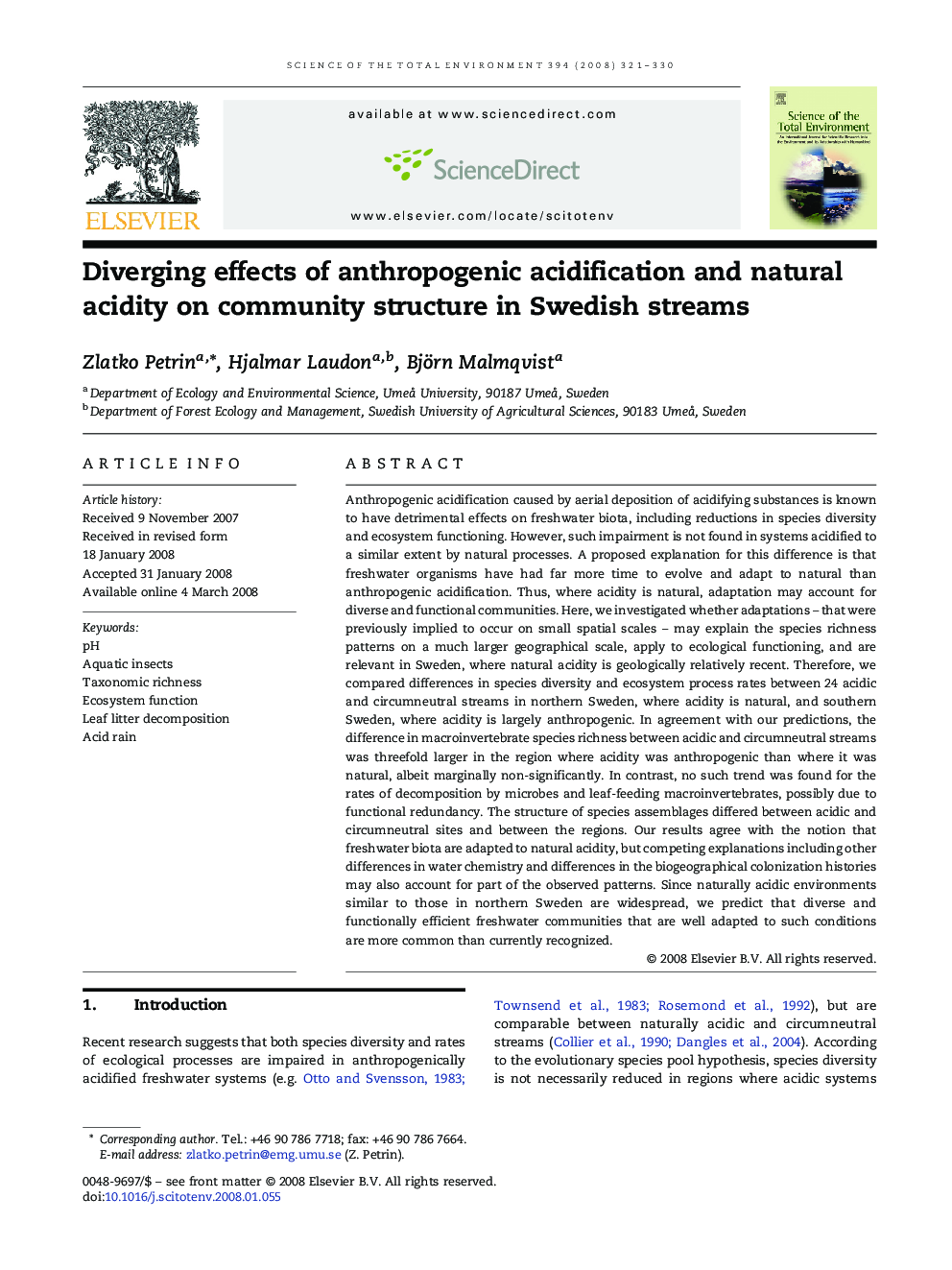| کد مقاله | کد نشریه | سال انتشار | مقاله انگلیسی | نسخه تمام متن |
|---|---|---|---|---|
| 4432841 | 1619927 | 2008 | 10 صفحه PDF | دانلود رایگان |

Anthropogenic acidification caused by aerial deposition of acidifying substances is known to have detrimental effects on freshwater biota, including reductions in species diversity and ecosystem functioning. However, such impairment is not found in systems acidified to a similar extent by natural processes. A proposed explanation for this difference is that freshwater organisms have had far more time to evolve and adapt to natural than anthropogenic acidification. Thus, where acidity is natural, adaptation may account for diverse and functional communities. Here, we investigated whether adaptations – that were previously implied to occur on small spatial scales – may explain the species richness patterns on a much larger geographical scale, apply to ecological functioning, and are relevant in Sweden, where natural acidity is geologically relatively recent. Therefore, we compared differences in species diversity and ecosystem process rates between 24 acidic and circumneutral streams in northern Sweden, where acidity is natural, and southern Sweden, where acidity is largely anthropogenic. In agreement with our predictions, the difference in macroinvertebrate species richness between acidic and circumneutral streams was threefold larger in the region where acidity was anthropogenic than where it was natural, albeit marginally non-significantly. In contrast, no such trend was found for the rates of decomposition by microbes and leaf-feeding macroinvertebrates, possibly due to functional redundancy. The structure of species assemblages differed between acidic and circumneutral sites and between the regions. Our results agree with the notion that freshwater biota are adapted to natural acidity, but competing explanations including other differences in water chemistry and differences in the biogeographical colonization histories may also account for part of the observed patterns. Since naturally acidic environments similar to those in northern Sweden are widespread, we predict that diverse and functionally efficient freshwater communities that are well adapted to such conditions are more common than currently recognized.
Journal: Science of The Total Environment - Volume 394, Issues 2–3, 15 May 2008, Pages 321–330